We arrive in the Lofoten Islands at night, after a flight to Oslo, another to Bodø, then a 25-minute hop in a small propeller plane to Leknes, one of Lofoten’s main towns. We fly over the dramatic Vestfjorden separating the islands from mainland Norway. During the hour-long drive to where we’re staying, I pick up on hints of the topography hidden in the darkness. There’s the briny smell of ocean. The feeling of a road narrowing to a curve around a cliff. Jagged peaks loom above us, as if etched in charcoal across the sky. Now and again we slow down for the narrow bridges that string together this remote archipelago.
It’s 9pm by the time my husband and I arrive at our lodgings — a hotel and restaurant called Holmen Lofoten, which is largely made up of old fishermen’s cabins in the village of Sørvågen. Its owner, Ingunn Rasmussen, is one of 13 siblings raised in this small community at 68 degrees, just north of the Arctic Circle.
Her father was a fisherman and carpenter. Her mother originally came here on holiday from the south of the country. “She wanted to sunbathe at midnight, under the Arctic sun,” says Ingunn. In the 1990s, Ingunn left the islands to work in the oil industry, in accounts, sales and management. When she made enough money, she decided to rescue the abandoned huts where her father used to prepare the fishing lines. Ingunn’s son, Håvar, now helps run Holmen Lofoten. Her brother, Audun, is the mountain guide.
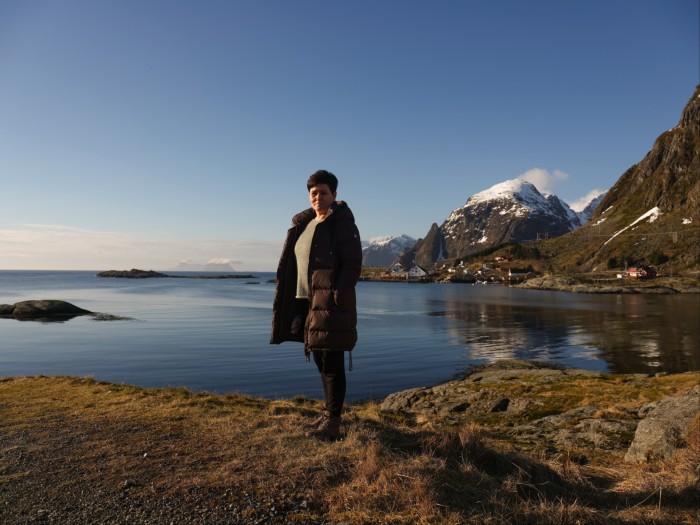
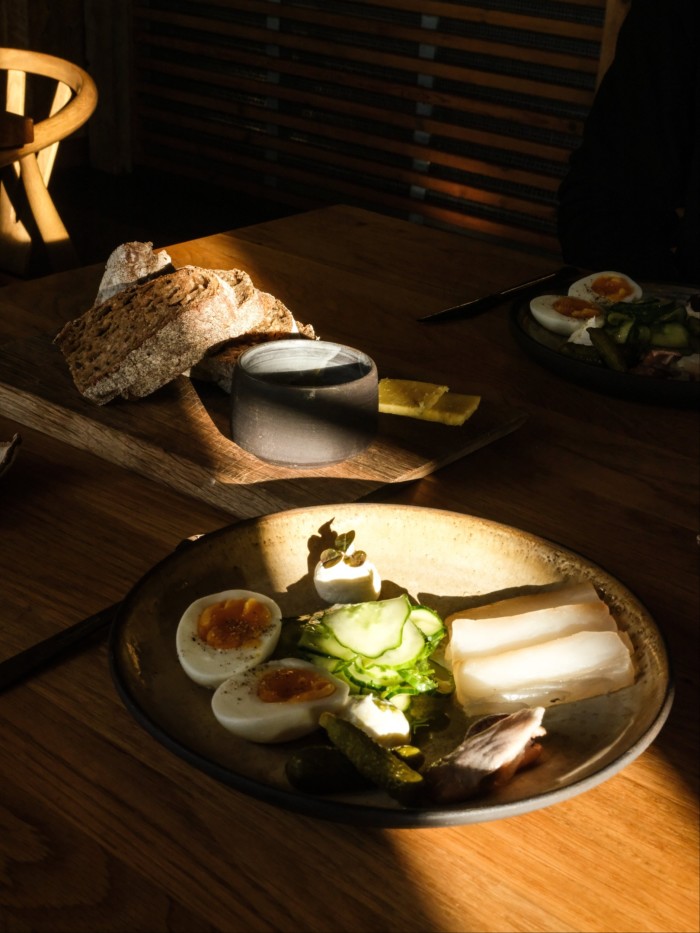
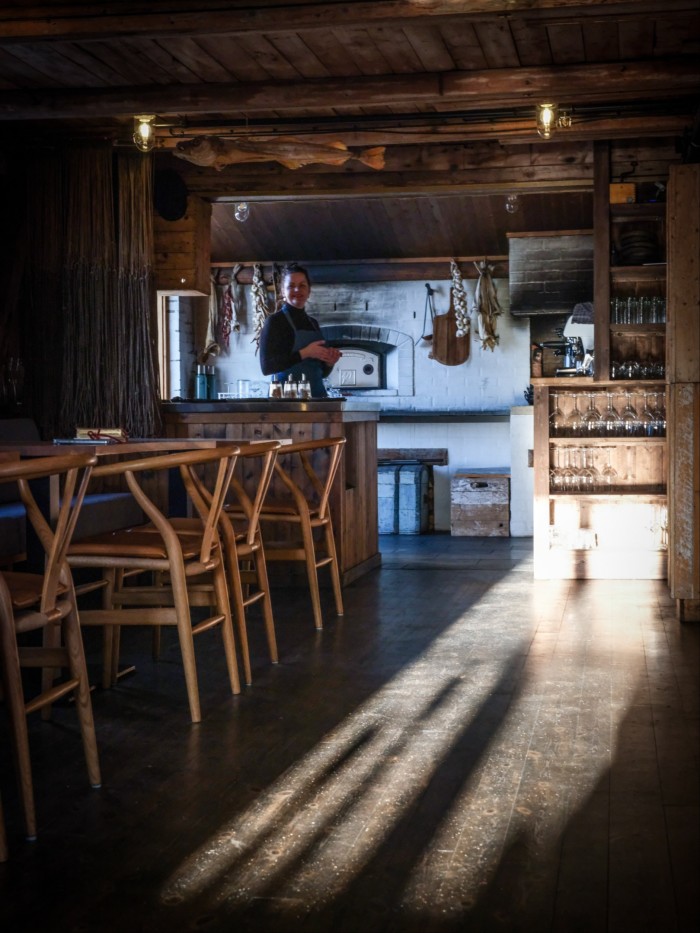
We pull up in the dark on a gravelly hummock, and follow a wooden walkway leading to the harbour’s edge. Ingunn shows us to our cabin in the cluster of wooden buildings cradled by Sørvågen’s breakwater. She tells a story about the oldest building, dating from 1827. The cabin — where boat crews used to eat, sleep and prepare their fishing equipment during the cod season — was floated across from an outer island when a fishing village was depopulated in the mid-19th century.
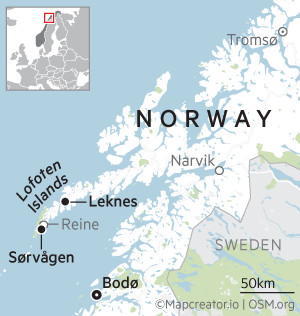
For me and my husband, it’s been a long day of travel from London. This makes the scene that opens up feel close to perfect: a cosy, waterside room with a wood burner already flickering with heat, and beds dressed in blankets woven from a soft Lofoten wool. Smoked cod’s roe and local charcuterie are waiting on the table, along with pickled vegetables, a loaf of oven-warm bread and a bottle of red wine.
“I’m trying to hold on to my cultural history,” says Ingunn. “From the age of five, I would help my father baiting fish lines. My job was also to cut out the cod tongues, which are still considered a delicacy. My brothers would hunt for hare and ptarmigan in the mountains. We’d collect buckets of berries in summer, as well as edible plants and seaweeds.”
The team are now trying to build a library of Lofoten’s edible plants, both on land and in the sea. “We want to map our little corner of the world, to record the traditional medicinal knowledge,” says Ingunn.
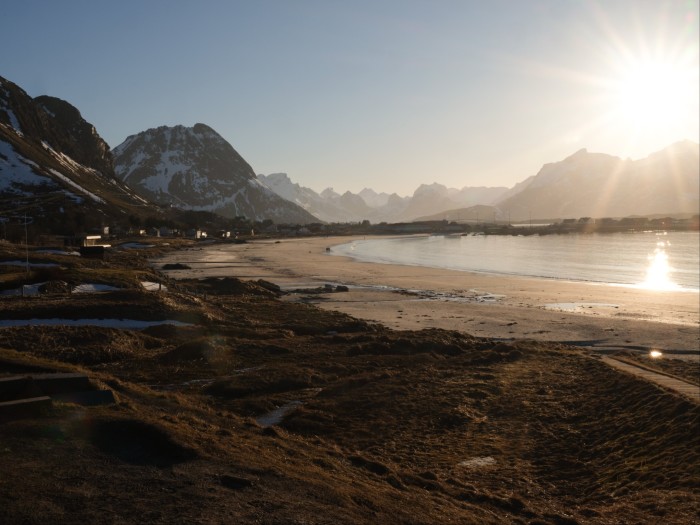
She leaves us to eat dinner. With no distractions, I’m hoping to get rid of some of the stress we’ve brought with us. Fit, healthy, aged 53, my husband’s usual idea of a holiday is going off-grid on two-week hiking expeditions with friends, from Greenland to Montenegro. Then in January, he thought he was suffering from common heartburn, when in fact it was a heart attack. He was lucky the cardiologists caught what was happening, but if I think this peaceful cabin means sleeping easily again, I’m wrong. A couple of hours later, I wake up restless. The awesome scale of where I am glimmers through the glass. The sky is green, in a blistering display of the Northern Lights.
Outside, the colours dance across the sky. They swoosh past in waves speckled with sequin stars. The lights frame an obsidian mountain, which looks as if the rock face is rising straight out of the ocean.
The combination of scale, silence and startling weirdness reminds me of a trip I made to the Kuril Islands in the far east of Russia — one of the most spectacular end-of-the-world archipelagos, which I visited before Putin’s all-out invasion of Ukraine. I think of the “unget-at-able” farmhouse at the northern tip of the Scottish island of Jura, where George Orwell wrote 1984, and where I’d gone camping the moment the pandemic rules relaxed. Like maps, remote islands take me out of myself. They adjust my sense of proportion.
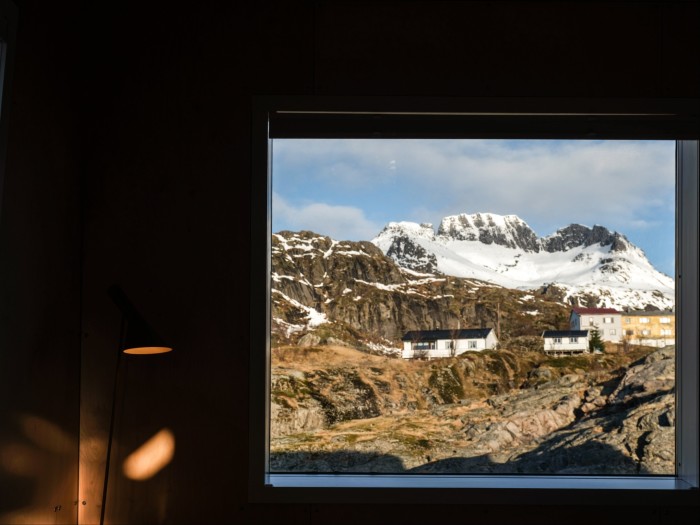
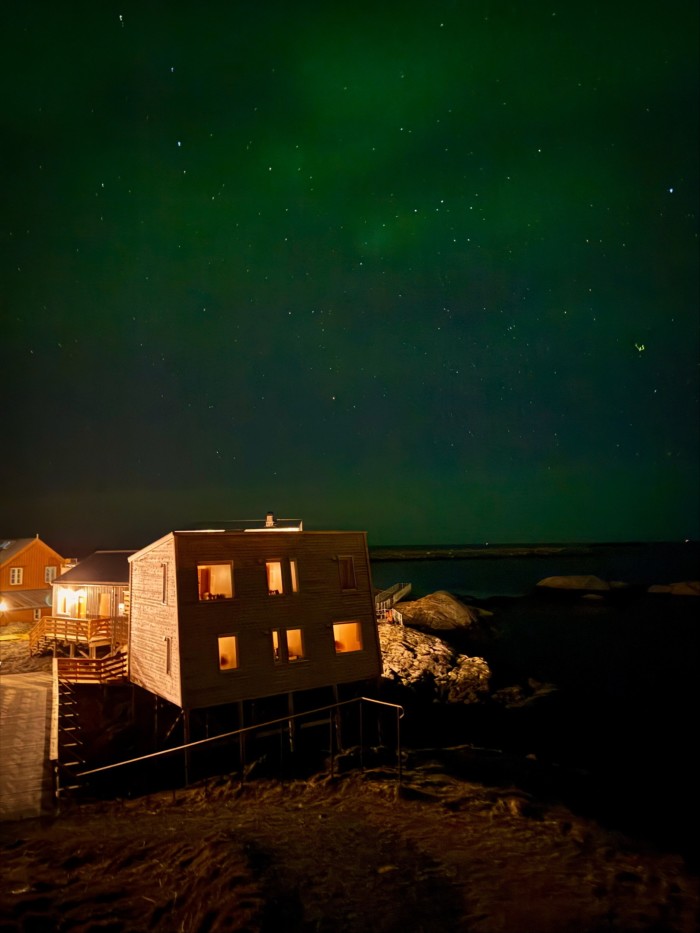
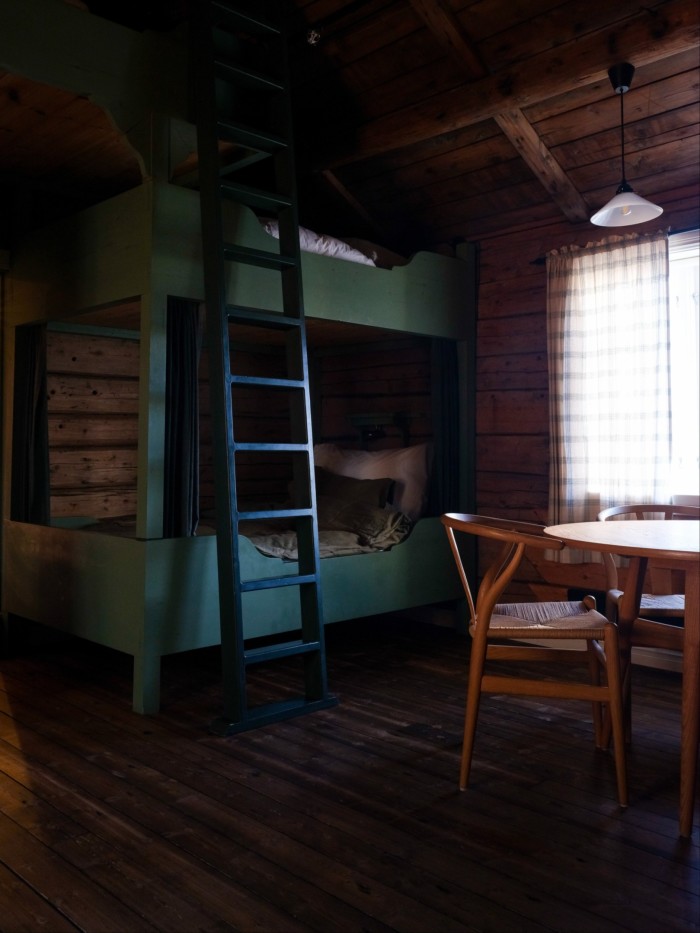
Holmen Lofoten is located a couple of miles from where the archipelago’s main road terminates at a village called Å on Lofoten’s south-east tip. Å is the last letter in the Norwegian alphabet (pronounced, Håvar later tells me, “like the sound you make when you see a ghost in your bedroom”).
Between this tip and a cluster of smaller islands, there’s a passage of water called Moskstraumen, where powerful open-ocean tidal currents converge in one of the world’s strongest whirlpools. A “short, quick, angry cross dashing of water in every direction” tucked between “howling and shrieking” surf, wrote Edgar Allan Poe in his 1841 short story, “A Descent into the Maelström”. In fact, it was Poe who introduced “maelstrom” to the English language, to describe a state of violent turmoil.
The next morning, I find my bearings in bright sunshine. Holmen Lofoten’s decor is simple, unpretentious. Some rooms, like ours, are furnished with large bunk beds (this is how the fishermen would have slept), with decorative curtains made from antique roped bait lines. There are also two-bedroom suites, in asymmetrical cabins built in timber and corrugated iron cladding — a modern design by Stavanger-based Schjelderup & Gram architects, with angles that reflect the Arctic light like slabs of mica. We eat a slow breakfast of pickled herring, smoked halibut and fermented beetroot chutney in the restaurant, which has an open kitchen and light-drenched sitting room upstairs.
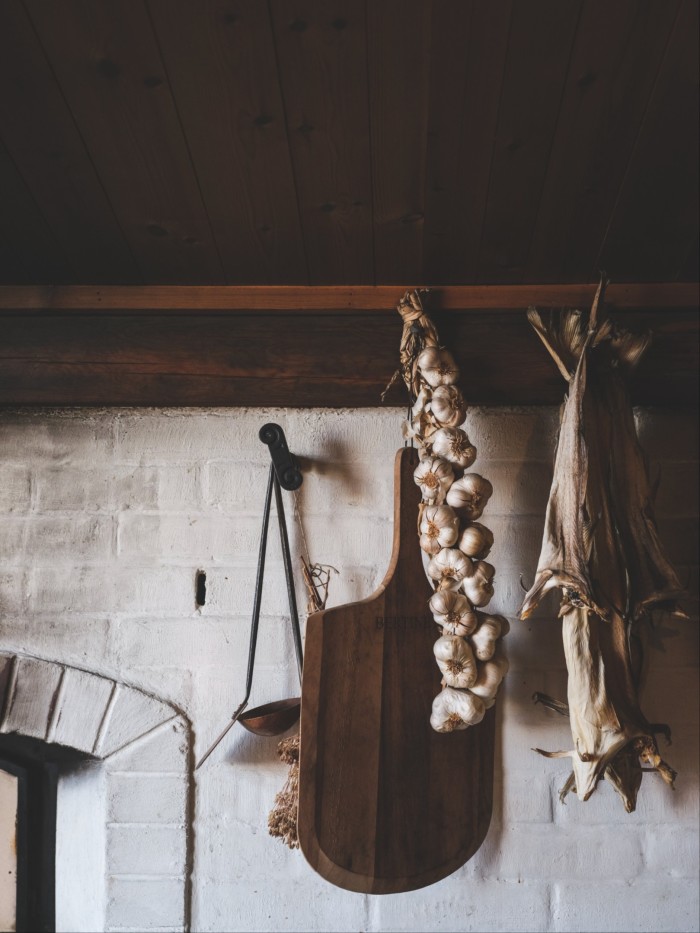
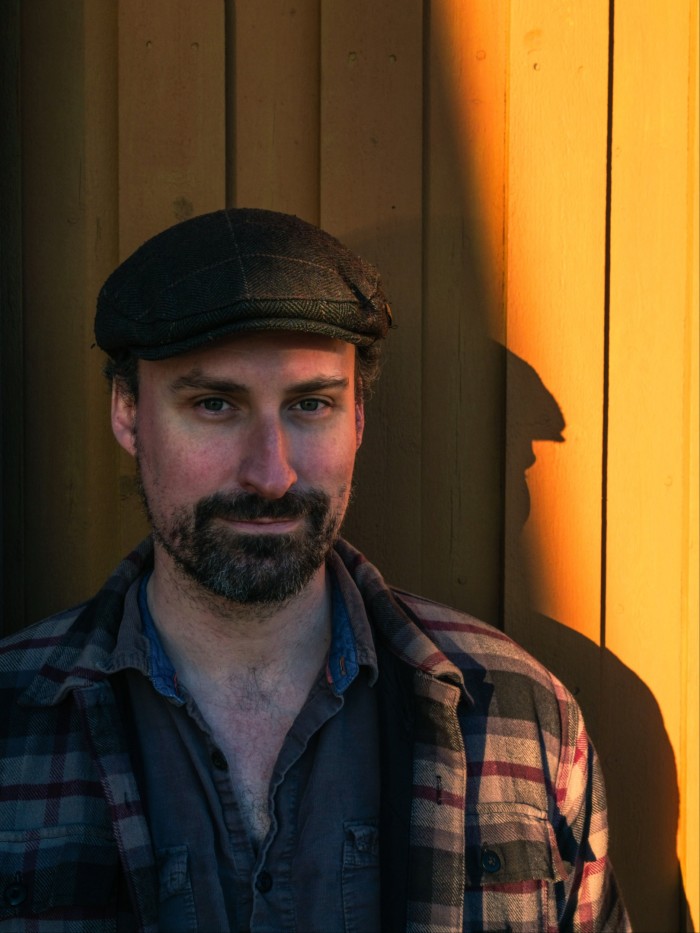
We chat with the head chef, Richard Cox, from the West Country in England. His passion is hyperlocal ingredients — ceps, lingonberries, cloudberries, local halibut, cod, goat and lamb — and the potential in every cherished ingredient, including whey and scallop tripe, which other cooks might throw away. His pantry is stuffed with jars of fermented vegetables and flower syrups, including wild camomile, fireweed, meadowsweet and rosehip. These ingredients are also featured in Holmen Lofoten’s “Kitchen on the Edge of the World” programme — gastronomic retreats, co-created by the British chef, Valentine Warner, which take place five times a year. In May, the Spanish chef José Pizarro is due to visit, as will Heidi Bjerkan, the Norwegian chef behind the Michelin-starred Trondheim restaurant, Credo.
I’m glad to be here in March, when tourism is slower, even if there’s a heightened risk of storms and snow. It’s also the cod-fishing season when the skrei migrate here to spawn — a traditionally busy period for the coastal fleet. In early 20th-century photographs on display in a small museum at Å, the little fishing boats are as tightly packed as a Venetian flotilla in a Canaletto painting. But the number of small boats has reduced, outpaced by factory ships which stay out at sea for weeks. From the lodge deck, I watch a single red trawler leave the harbour with its puckering wake. It’s bewitching, the way the sky and granite are mirrored in the water. The reflection is so sharp, I can tell where avalanches have slipped. The peaks are draped in white threads from stubborn ice and snow. Leafless birch trees look as if they’ve been chiselled into the mountains’ snowy skirts.
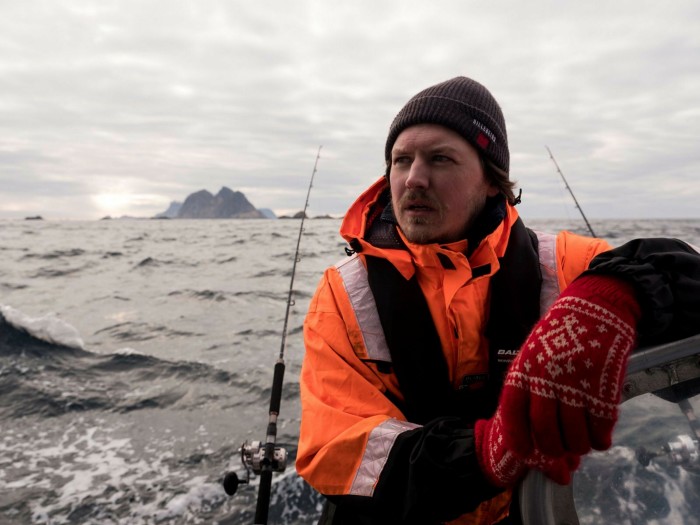
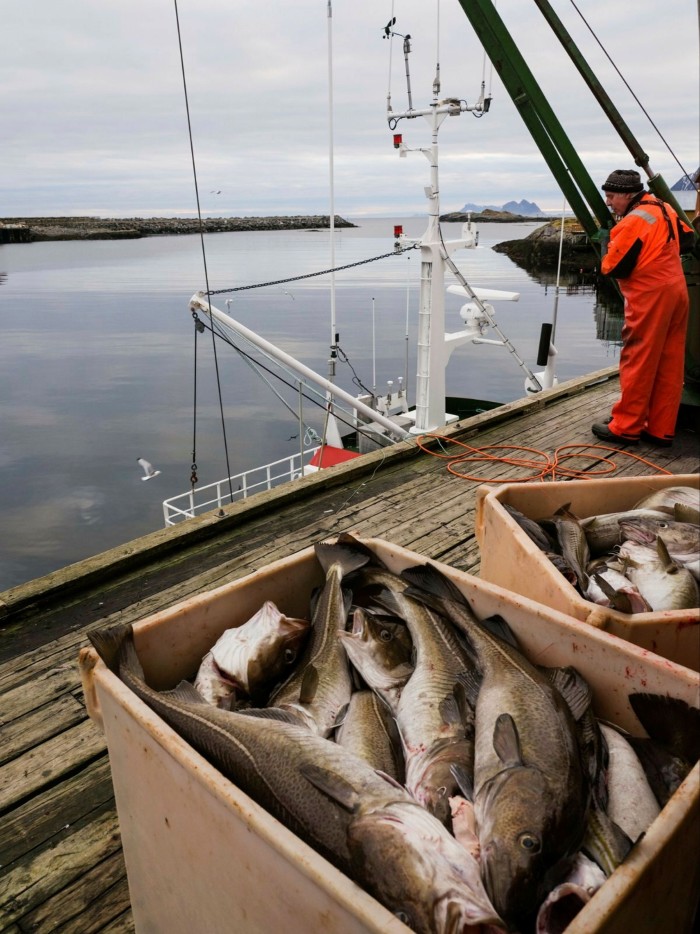
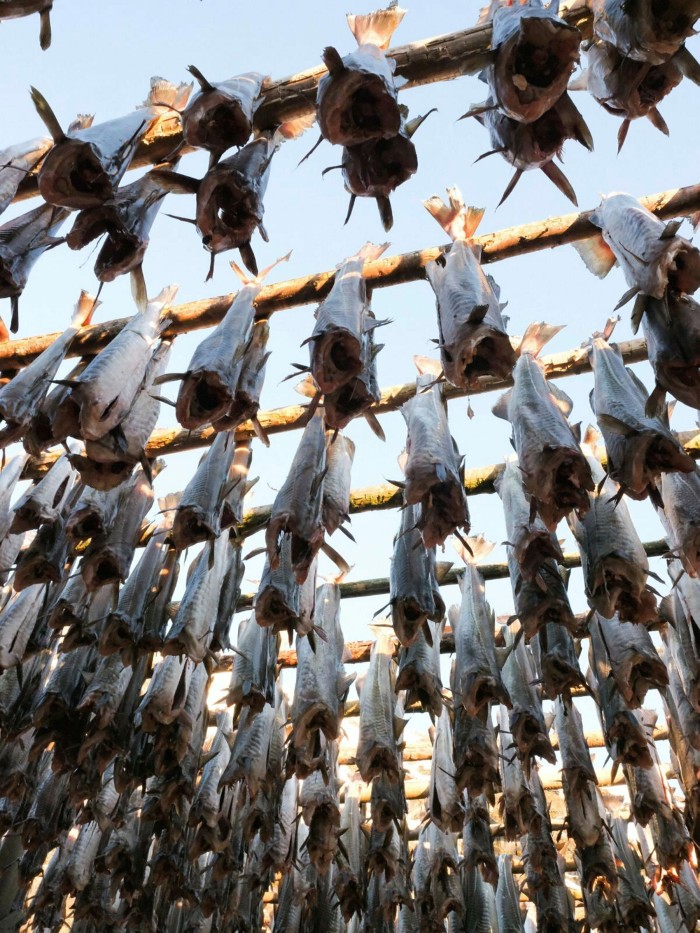
“The weather isn’t always like this,” says Håvar as we head out on a boat for fishing. Two weeks ago, the waves were running several metres high. But today, even the sea beyond the breakwater has a glassy glaze. We keep our eyes peeled for a pod of orca. We pass wooden cabins painted in oxblood reds and sea buckthorn yellows, which grip the narrow littoral. Patches of flat ground above the tideline are filled with wooden racks. This is where the cod are hung out to dry, their brittle tails as golden as caramelised sugar. Lofoten’s famous air-dried stockfish, or tørrfisk, has EU Protected Geographical Indication status, like Champagne.
I catch a 10lb cod in the first 10 minutes. After a while, my husband snags a ling, but otherwise our lines are quiet. When no more fish take the bait, we travel towards the Moskstraumen, which our skipper says is safe to cross because of the weather and the moon phase. It is, but it’s unsettling. The sky is becoming greyer, the ocean choppier. A strong swell comes out of nowhere, then a ruffling of the surface, like water coming to a boil. We cross it, and enter a bay where the shallows flicker turquoise. Håvar points out a derelict settlement called “Hell”.
By the time we’re back at Holmen Lofoten, the fire in our cabin is already lit. Our faces are flushed with cold. Dinner is as delicious as the ingredients are delicately put together. Raw Norwegian prawns are dunked in citrus and served with scented pine. The duck and smoked beetroots ooze an umami earthiness.
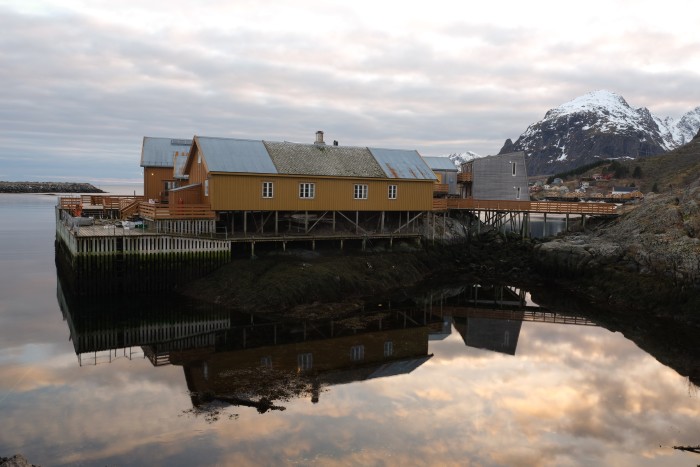
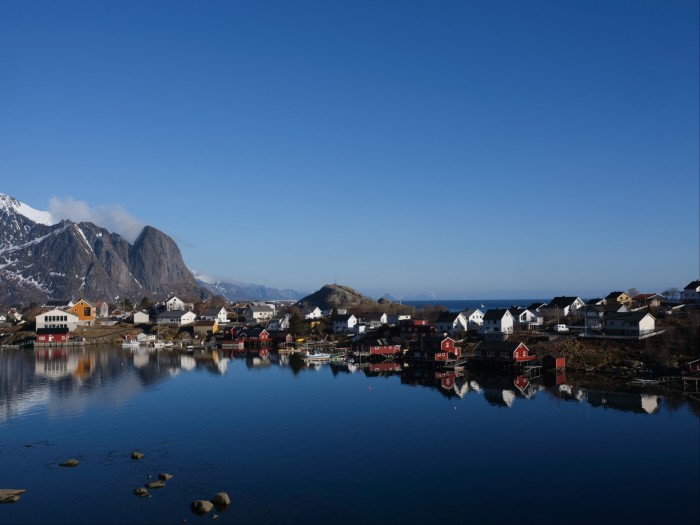
We stay for three nights. We both feel stronger with reading, walking, and eating healthily. On our last day, we take a longer walk with Audun, who guides us above the tree line, climbing up through aspen just beginning to bud in tears of silver fuzz. Audun talks about his childhood, about coming here to hunt with his father. He recalls a pair of homemade skis fashioned from the wood of a herring barrel. We keep on climbing until we’re looking down on a frozen glacial lake. We stop for a picnic lunch.
Once again, the sea is flat, like a bolt of silk scissored by the ferry travelling back to Bodø. The Moskstraumen is out there in the distance, but what had first felt like a disturbing metaphor, now feels like something else — a reminder of nature’s caprice, but also a prompting to savour the chances we get. I lie back with my head on a pillow of lichen-covered stone. I listen to my husband chatting about other hiking routes he can do with Audun on a return visit. For the first time in weeks, the stress I’ve been carrying feels like it can begin to melt — a fading of the turmoil.
Details
Sophy Roberts was a guest of Holmen Lofoten (holmenlofoten.no). A three-night stay in a double room with breakfast costs from £780 per person based on two people sharing. Starting in May, accessing the Lofoten Islands by air will be easier thanks to new direct flights to Harstad/Narvik Airport at Evenes from Paris (Air France), Zurich (Edelweiss), and Frankfurt (Discover Airlines)
Find out about our latest stories first — follow FT Weekend on Instagram and X, and subscribe to our podcast Life & Art wherever you listen

